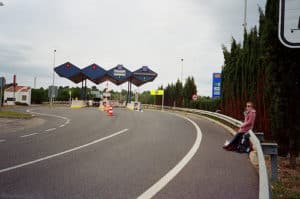Table of Contents
Castle-hopping in the Bavarian Alps
Ludwig II, King of Bavaria from 1864 to 1886, grew up in Hohenschwangau, a neo-gothic castle filled with murals depicting medieval romances. These stories of knights and chivalry became a lifelong obsession for Ludwig, inspiring him to build his own fairytale castle, Neuschwanstein, on a hill high above his childhood home.
Though Ludwig (aka The Swan King) never fully completed Neuschwanstein, it has become one of Germany’s most popular tourist attractions, thanks largely to its association with Walt Disney, who used it as a model for his Sleeping Beauty Castle at Disneyland.
If you’re in Bavaria, you’ll certainly want to visit Neuschwanstein, but don’t stop there. Castle Hohenschwangau, where Ludwig spent his impressionable youth, is also open to the public. As is Linderhof, the only palace that Ludwig actually finished. While it’s possible to visit these three Bavarian castles in a single day, I recommend staying a night or two. This will allow enough time to explore the magical alpine setting, a realm of snowy peaks, pine forests and deep blue lakes.
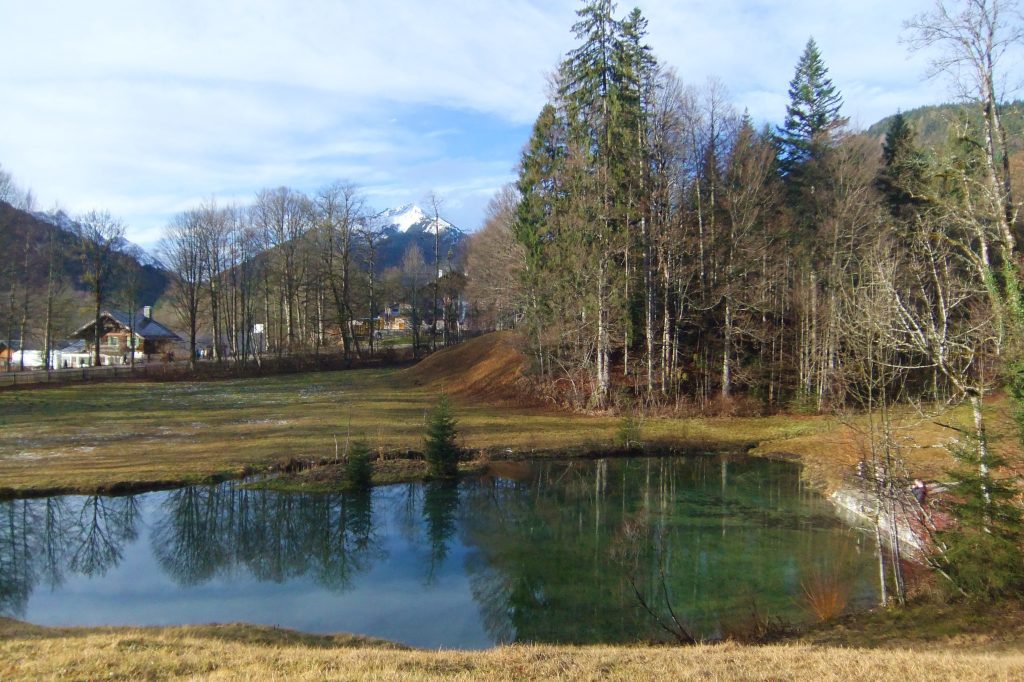
Hohenschwangau Castle
Start in the village of Hohenschwangau, which means “High Swan Land” in German. Ludwig’s father, Maximillian II, rebuilt Castle Hohenschwangau from ruins in the 1830s, decorating its interior with paintings of legendary German heroes like Lohengrin (the Swan Knight) and Parsifal. Imagine young Prince Ludwig roaming the gothic corridors, reading Romantic poetry, dreaming of medieval adventure.
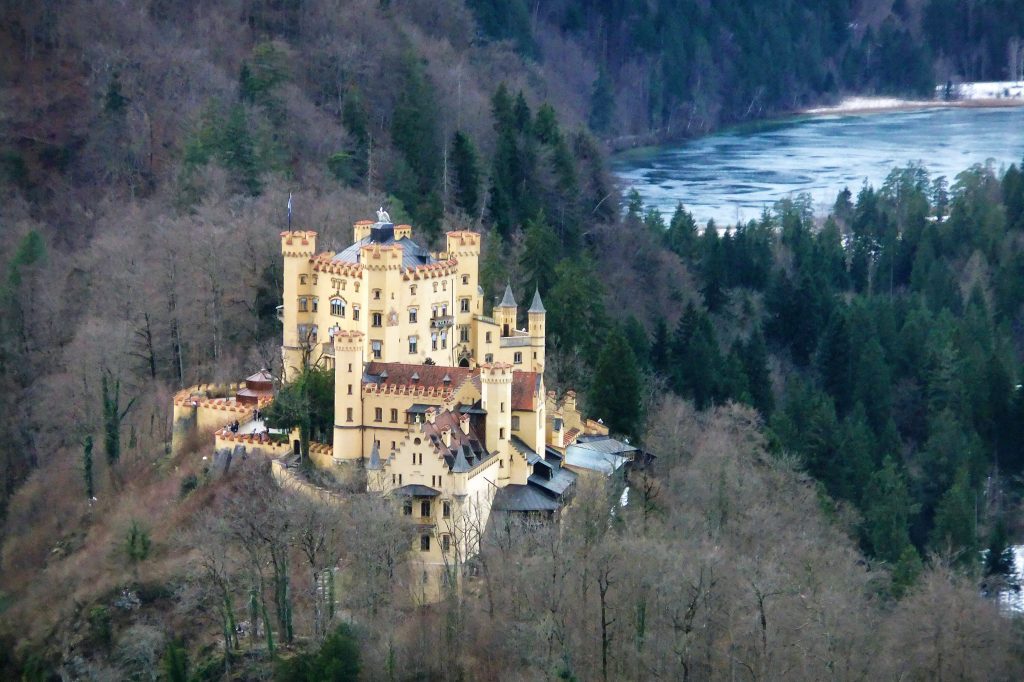
The Museum of the Bavarian Kings is located below the castle on the banks of a tranquil lake (Alpsee). It tells the story of Ludwig’s royal family, the Wittelsbachs, who ruled Bavaria from 1180 to 1918. Stop in for a look at the Swan King’s stylish duds.
Neuschwanstein Castle
On the other side of the village is Neuschwanstein, the retro castle Ludwig built during the final years of his reign. By this time, he had very little power as Bavaria had fallen under control of the Prussian Emperor. Castle-building became an escape from reality for Ludwig and he was obsessed with every detail of Neuschwanstein’s construction. Sadly, he only occupied his dream home for a brief period before he was deposed for profligate spending and general insanity. He died mysteriously at the age of 40 while in government custody.
To get to Neuschwanstein from Hohenschwangau you can hike or take a bus up the hill. I suggest busing up and walking down to enjoy the mountain scenery at a leisurely pace. If you really want to step back in time, horse and carriage rides are also available.
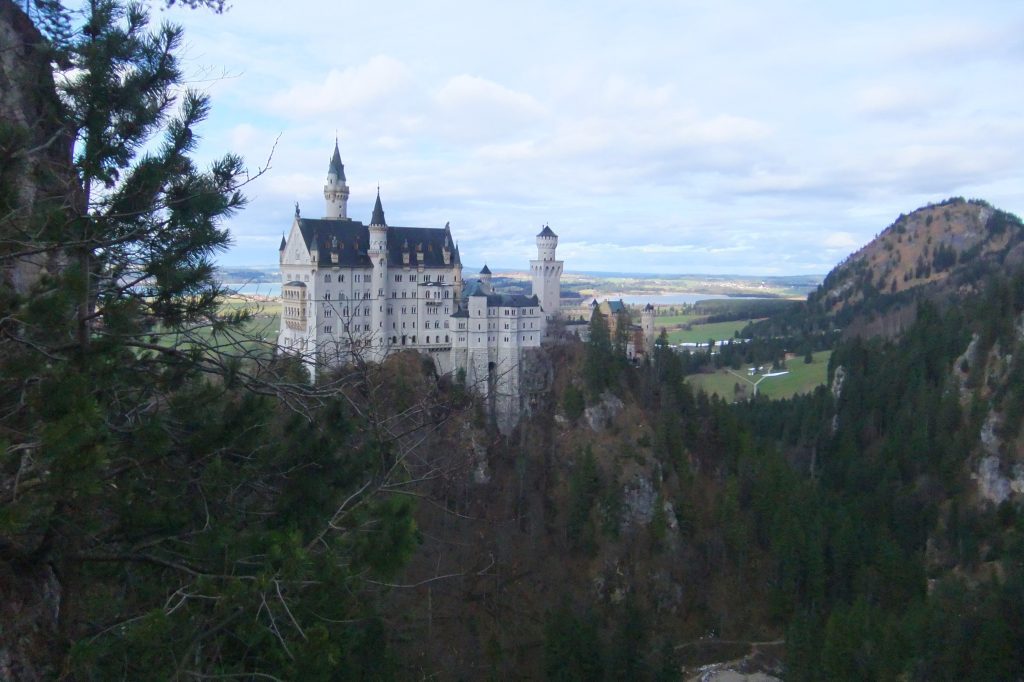
Some features of the finished rooms in Neuschwanstein are impressive, particularly the elaborate woodwork in the study and bedroom, but these spaces don’t feel lived-in. More memorable are the exterior views. The brick castle is clad in stone from a local quarry, so it blends seamlessly with its alpine environment.

Be sure to make the five-minute walk from the bus stop to Mary’s Bridge for an iconic photo of poor Ludwig’s masterpiece. You’ll also get a stunning look deep into the Pöllat Gorge, where waterfalls tumble over rocks into green-blue pools. There’s a hiking trail through the gorge. If it’s open and you have time, go for it. Without these sublime surroundings, Neuschwanstein would just be another castle.
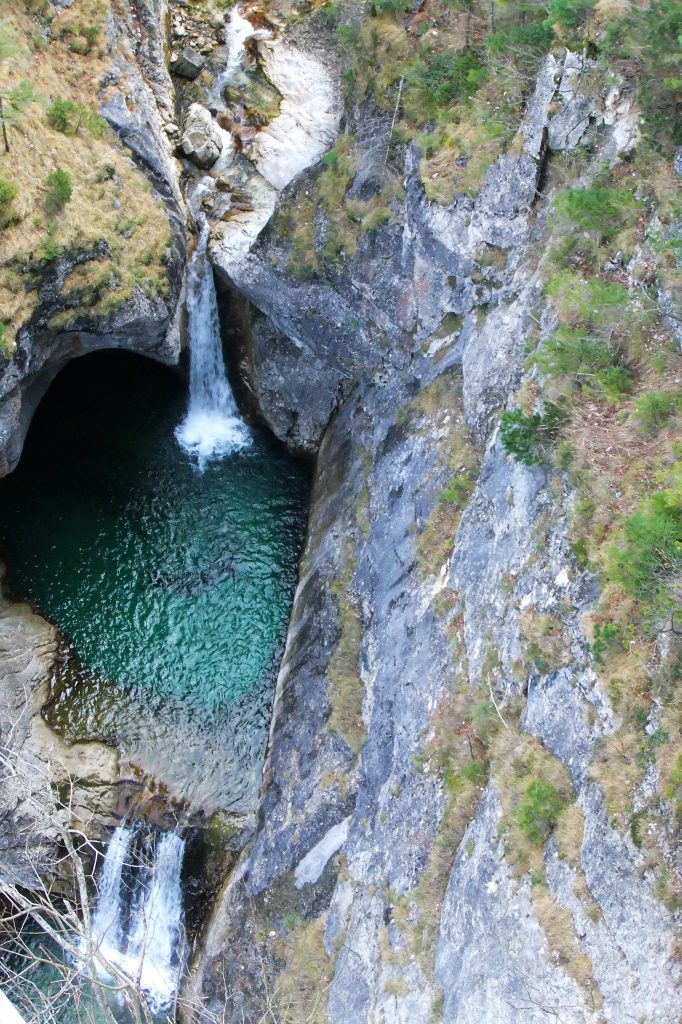
Where to Stay: Oberammergau
If you’re looking for a Bavarian basecamp, the charming town of Oberammergau is less than an hour away from Hohenschwangau, and very close to Ludwig’s Linderhof Palace. Oberammergau is famous for its Passion Play (performed every decade since the 1600s), but it has a lot more to offer: hearty German food, houses decorated with folksy murals, and some of the finest wood carving in Bavaria.
For a rustic stay in a historic inn, try the Hotel Alte Post—you’ll love the beer garden. Budget travelers can book a bunk in a 6-bed dorm at Youth Hostel Oberammergau. Higher-end travelers will want to book in advance at the gorgeous Hotel Maximilian.

Linderhof Castle
After breakfast, head for Linderhof. King Ludwig completed work on this dainty palace in 1876 and passed many solitary hours there, living in a fantasy world inspired by poetry and opera. Linderhof is an homage to the style of Louis the Sun King—it’s very French, with gold everywhere.
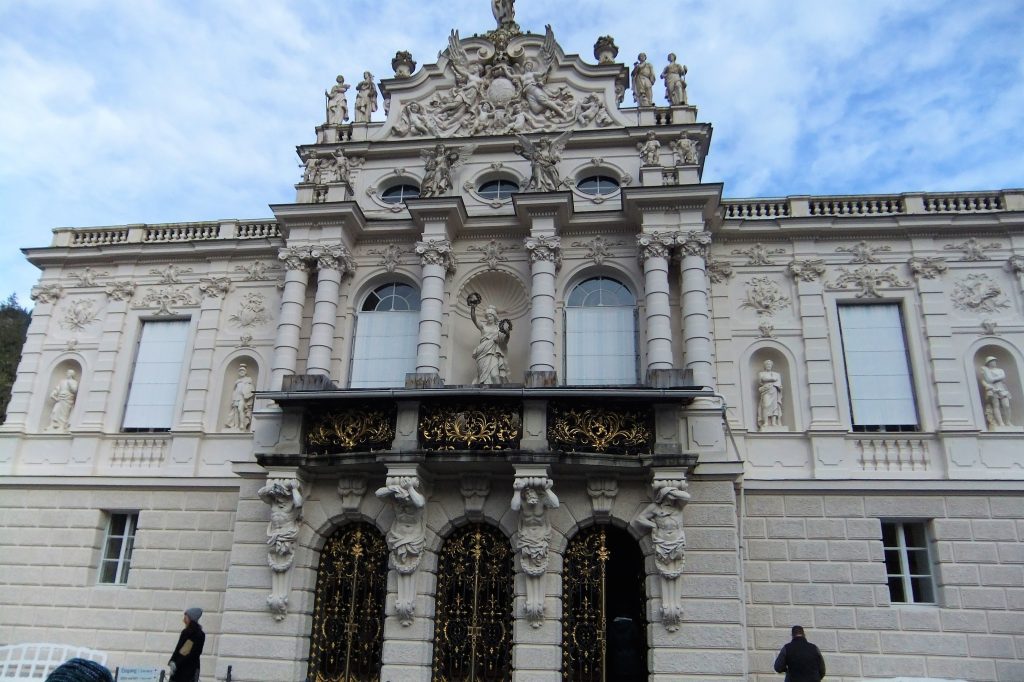
The most fascinating part of the palace is the mirrored dining room where the reclusive king ate alone, staring at his own reflection. A “Mystery Table” was raised and lowered through the floor with each course so he didn’t have to interact with servants. Ludwig spent his last decade living nocturnally, like some eccentric vampire.
Entrance to all three castles is by guided tour only (book your tickets online to avoid lengthy lines), but you’re free to wander the grounds as long as you like. Linderhof’s gardens feature Renaissance terraces, pools, fountains, a cascade, and various grottoes and “refuges,” built in exotic architectural styles.
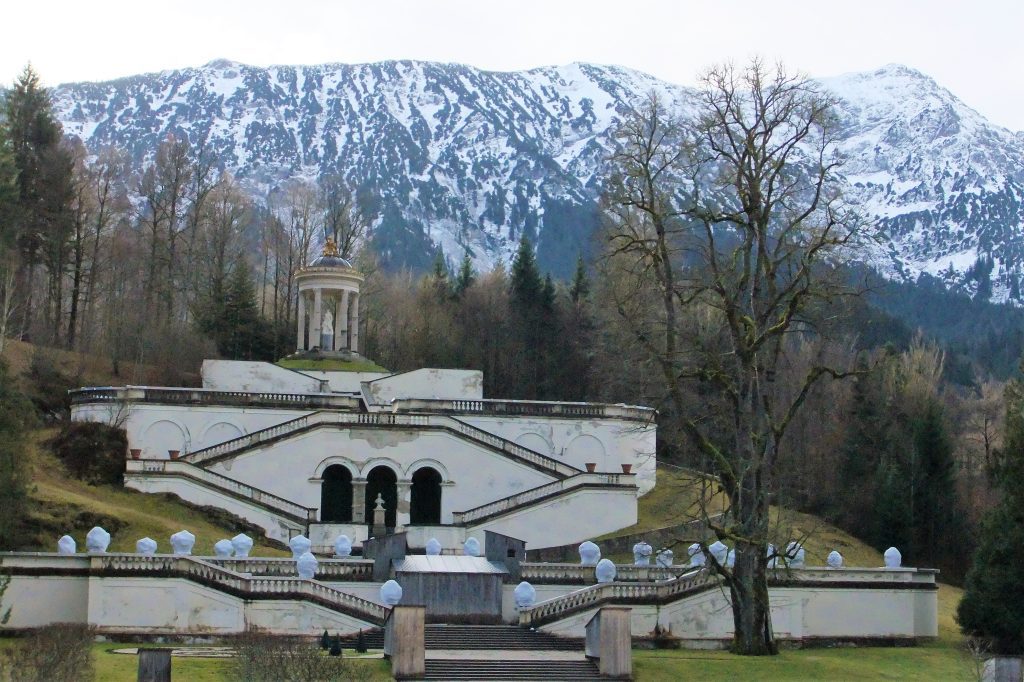
Don’t rush through these royal abodes—they offer a rare glimpse into the private life of a fascinating sovereign, who famously wanted to “remain an eternal mystery to myself and others.”
Traveling onward from the Bavarian Alps
Now you are more prepared to visit three Bavarian castles. For more fun in the Alps, why not head over to Austria for some hiking and hefeweizen? Or head to Munich for Oktoberfest if that is more your style.



